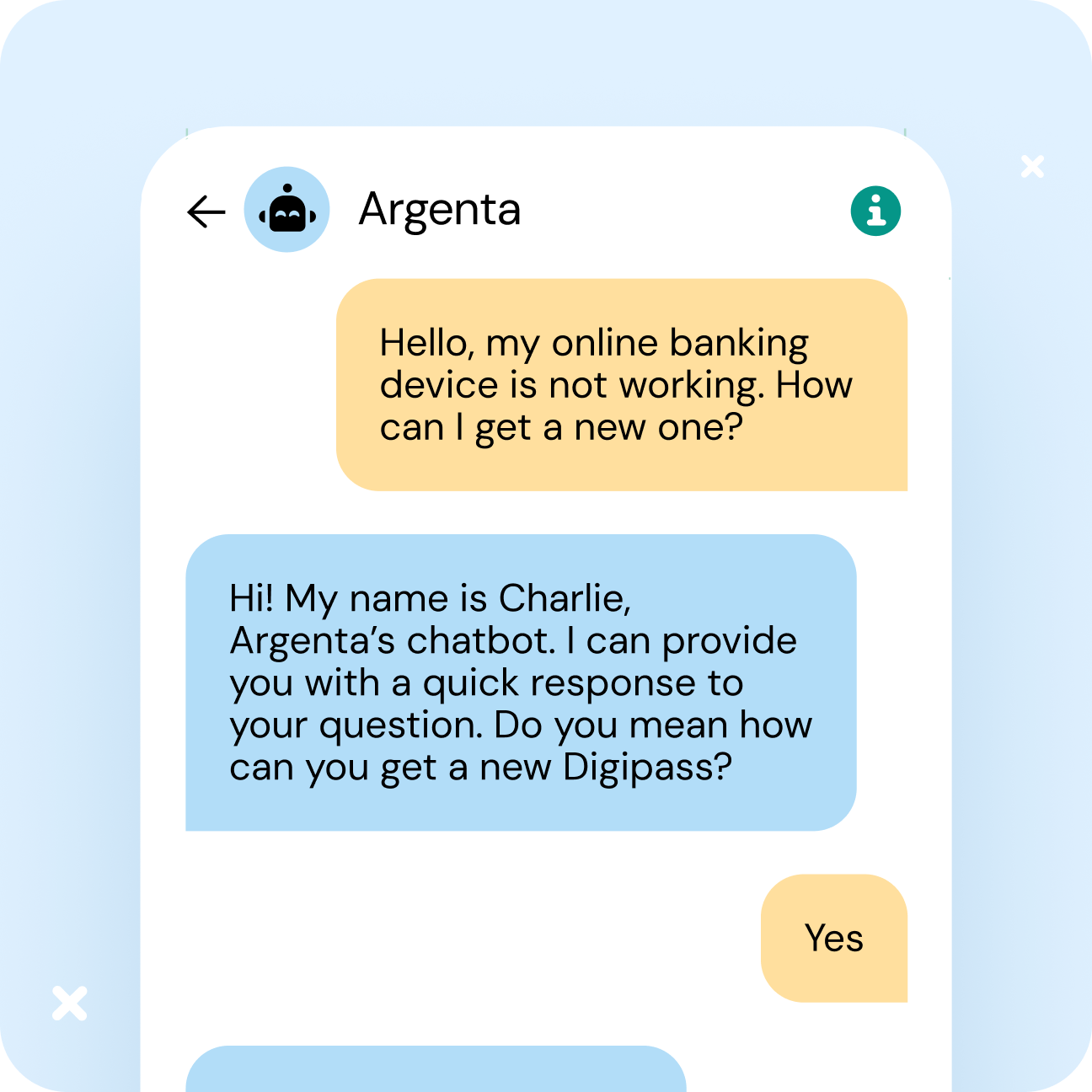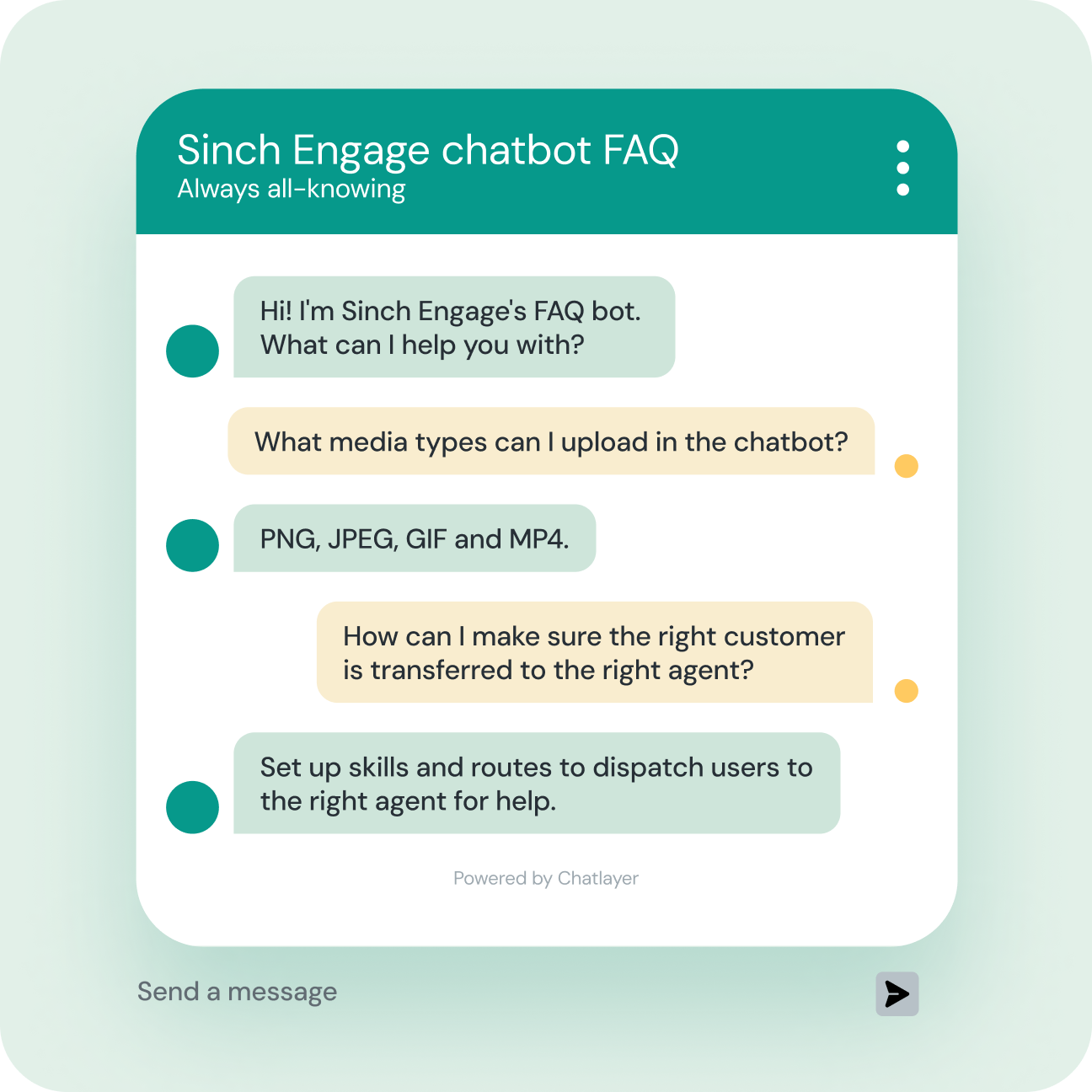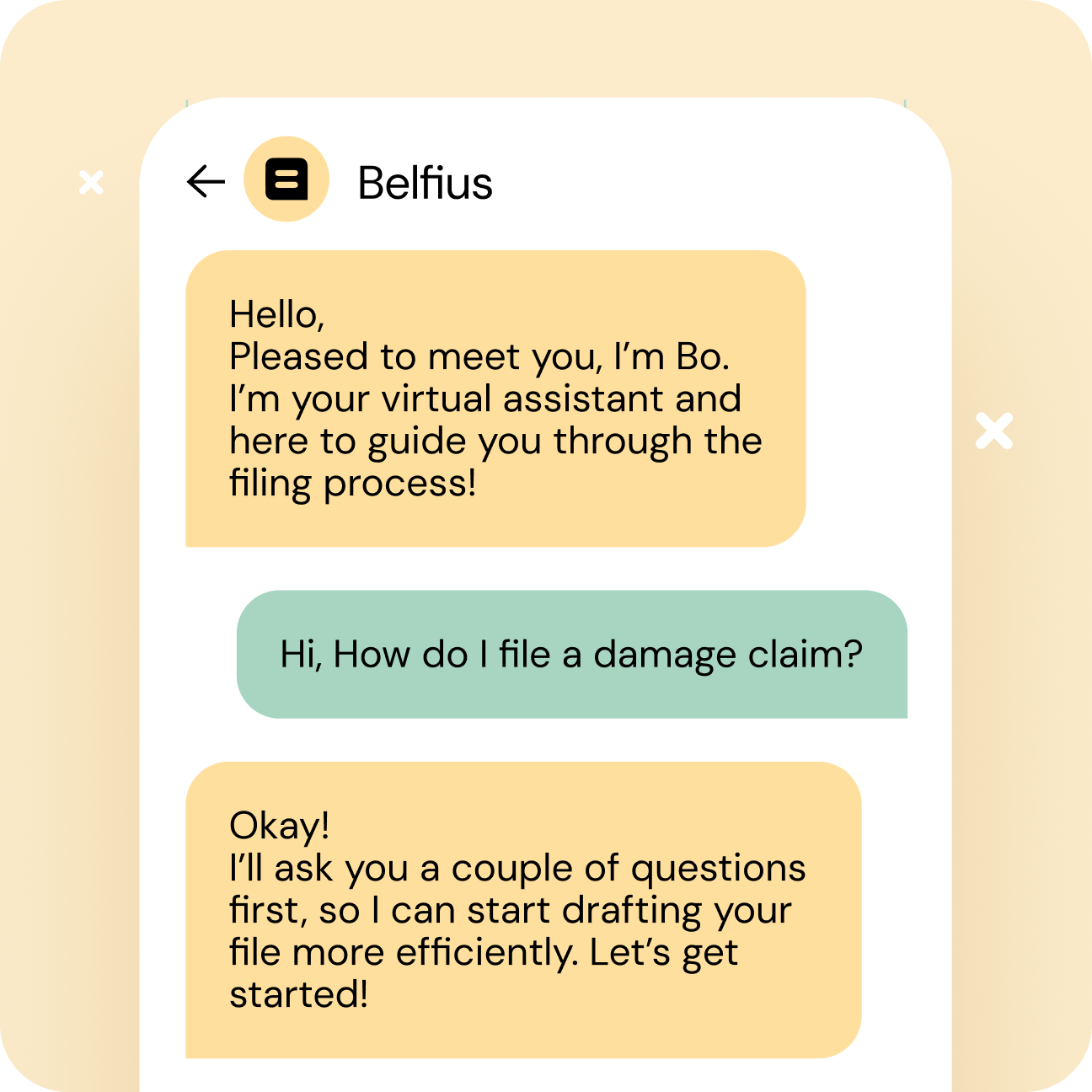Chapter 4
Chatbots don’t suck — but the way you’re using them might
AI-driven technology, like generative AI, has become integral to many aspects of customer experience and business operations — and has done so at lightning speed.

Chapter 4
AI-driven technology, like generative AI, has become integral to many aspects of customer experience and business operations — and has done so at lightning speed.

Generative AI will vastly improve the possibility to automate personalization in customer engagement.
With consolidated data across multiple engagement channels, the tools will be much better to customize messages and respond faster. This will lead to a significantly improved customer experience.

And nearly 63% said they’re interested or actively evaluating it to engage with their customers.
Of course, FOMO shouldn’t be your rationale for evaluating AI for your company, so let’s shift the focus toward what truly matters — your customers and their experience with your business. What do consumers value most about AI and chatbots in their interactions with businesses? How can you use them to build deeper connections with your customers?

To understand what consumers expect from AI in business communications, we asked them in which situations they’d like to interact with chatbots.
We found getting help for troubleshooting and questions is by far the most popular use case on the consumer’s end: a combined 78% said they want to use chatbots for these purposes.
Answers also revealed other interesting use cases: 13% said they want to use chatbots to update something in their account, and a little under 9% would like to use them as personalized shopping assistants.
We also wanted to understand under what kind of circumstances consumers would prefer to interact with a chatbot over a human agent.
Nearly 20% said they’d always be happy to avoid talking to an agent if AI can answer their question — and we expect that number to increase as businesses learn how to feed the right knowledge into their AI bots.
The survey also showed getting quick answers is one of the main reasons why consumers turn to chatbots. A combined 61% selected answers related to waiting time and availability.
The chatbot answers correctly
The chatbot understands me
The chatbot hands over to an agent when it doesn’t know the answer
The chatbot answers in a natural way
I can get help faster
The chatbot helps me like ChatGPT does
Overall, over 80% of consumers have a positive or open attitude toward chatbots. Still, nearly 20% would prefer to never interact with a chatbot. In case you ever doubted it, this goes to confirm people still want to talk to people. So, as you embrace AI, remember to always maintain a human presence. While AI chatbots are great to speed up problem resolution, some customers will always require human assistance, and you need to make access to live agents seamless.
To better understand what defines a positive chatbot experience, we also asked consumers what they think matters most when interacting with a chatbot, and here’s what they said:
Reducing the workload for teams
Being innovative and getting ahead of the competition
Improving processes, like data management
Offering customers a 24/7 service
Saving on operational or support team costs
On the business side, expectations are high, too. Some of the top benefits businesses expect to see when implementing AI chatbots include:
Our survey found ensuring AI chatbots deliver tangible value for customers is a major concern for businesses. Making sure security standards are met when using AI chatbots is also perceived as a key challenge, and it’s easy to understand why. There’s no shortage of innovative fraud tactics, and AI-enabled scams — like deepfakes in video and voice — are already on the rise.
The good news is AI can also contribute to building safer ecosystems for communications, and software providers are already using it to better protect their networks and end users.
The AI race in customer communications is definitely on, but which use cases and features have the potential to drive sustainable value for your business and customers?

Remember when you had to guess chatbot keywords to get answers to your questions? Those days are gone — let’s all breathe a big sigh of relief.
Businesses can now build human-like conversational experiences in minutes and let users interact with their chatbot with the peace of mind they’ll receive helpful answers thanks to automatic intent recognition and sentiment analysis. No more off-topic replies! That’s the beauty of Natural Language Understanding (NLU) with guardrails.
And if the chatbot doesn’t have the answer, users can be transferred to a live agent or given relevant instructions to find the help they need. We’re willing to bet this will convince many skeptical users to give chatbots a second chance.

Customer Story
Moet Ik Naar De Dokter (MINDD), a Dutch healthcare company, is a great example of responsible AI use in a heavily regulated industry. The company built an AI voice bot to help triage patients and let them book appointments effortlessly, all while keeping sensitive medical data secure.
Thanks to smart triggers in the conversation flow, the bot automatically detects situations that may require immediate medical attention and accelerates the triage when a patient appears to be in distress.
One aspect of Sinch SimpleTexting I find particularly invaluable is the utilization of the campaign creation AI feature, which I frequently incorporate into my strategies.
Use text generation to automate and accelerate content creation. Whether you’re sending text messages or emails, you can now generate content tailored to your brand voice and audience in seconds, across multiple languages. Just prompt, have the content checked and approved by a human, and your campaign is ready to go.
This type of integration helps both B2B software builders and enterprises as it enables natural language processing (NLP) tasks to be trained with fewer examples, leading to more accurate responses and improved customer experiences.
Put AI to work to supercharge conversations with untapped customer data and enhance personalization and contextualization — all while saving time and money.
With the right tools, you can analyze incoming messages from any channel, get insights into customer journeys and intent, and keep conversations free from illegal and profane content.
From enhanced customer experiences to efficient automation, improved data insights, or increased security, and much more, AI has the potential to truly transform the way businesses and consumers communicate and build relationships.
But delivering real value for your business and customers with AI requires having effective gatekeepers and measures in place to maintain trust in the technology.
At Sinch, we’ve built our tools with security, transparency, and user experience in mind so you can embrace AI with confidence, no matter your use case.

Customer Story
As one of the largest banks in Belgium, Belfius offers a wide range of insurance products in addition to its core banking business, serving over 1.4 million customers through its mobile app. They needed an easy and convenient process to simplify insurance claim filing. Using Sinch’s conversational AI application, Chatlayer, the company integrated a smart chatbot into its mobile banking app that made the process of filling out insurance claims effortless and personalized for each customer. Belfius’ AI chatbot MyBo now processes over 2,000 claims monthly, saving the customer care team about 600 working hours per month.
And that’s not all. Conversions also increased by 88% compared to traditional insurance claim forms. Building on this success, the company also launched a personalized AI chatbot to answer daily banking questions about payments, money transfers abroad, fees, and more. MyBo’s counterpart now answers 5,000 customer queries monthly, with always-on availability.